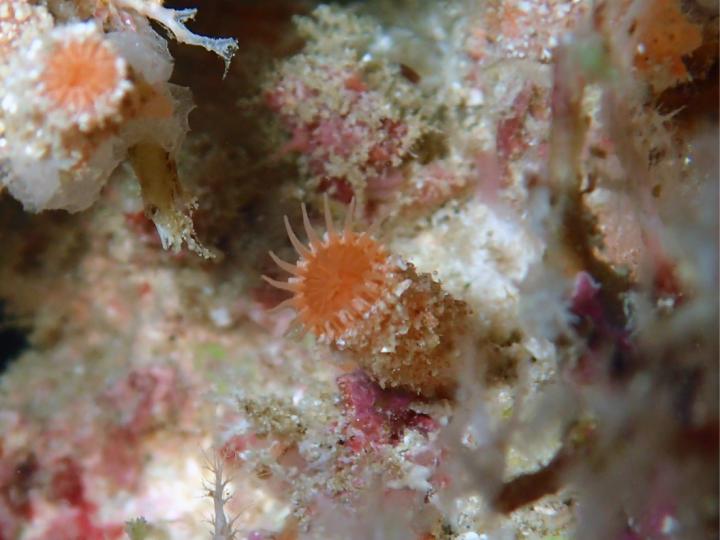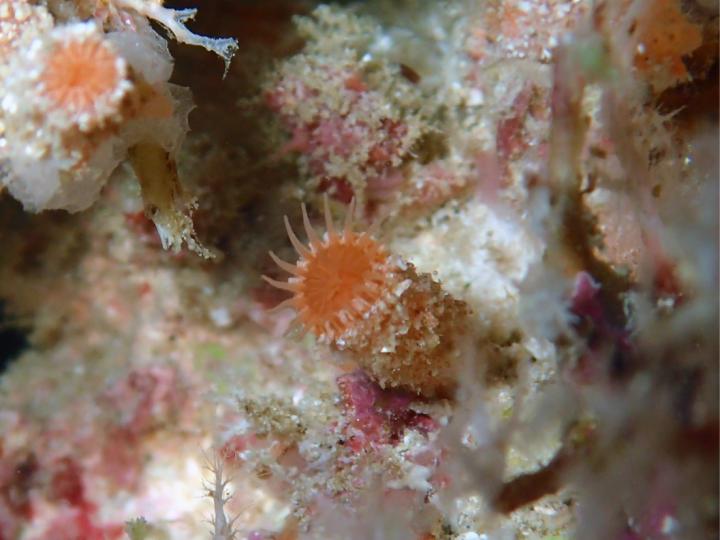
Credit: Hiroki Kise
Three new species of zoantharians were discovered by researchers from the University of the Ryukyus and Kagoshima University, Japan, and the Palau International Coral Reef Center. Despite not being previously known, all three species were found widely across the Indo-Pacific, with at least two species found in the Red Sea, the Maldives, Palau, and southern Japan.
Zoantharians, or colonial anemones, include species popular in the pet trade such as Zoanthus or Palythoa, but the new species are all much more cryptic, living in marine caves, cracks, or at depths below most recreational SCUBA diving (>20 m). The research was published December 29, 2017, in the open-access journal ZooKeys.
The three new species belong to the genus Antipathozoanthus, which contains species that only live on top of black coral colonies. However, surprisingly, one of the new species does not live on black corals, but instead in narrow cracks in coral reefs.
"We think that the new species, Antipathozoanthus obscurus, has evolved away from needing to be on top of black corals to take advantage of the available space in coral reef cracks", said lead researcher Hiroki Kise. "This is yet another example of how much diversity is right underneath our noses, but we still know nothing about it."
Coral reefs, which are widely threatened by rising temperatures from global warming, are generally believed to harbour very high numbers of species, including yet many undescribed or unknown species.
Amongst the other two new species is Antipathozoanthus remengesaui, named after the current president of Palau, Tommy Remengesau.
"Much of our work was based in Palau", said senior author Dr. James Reimer, "and we wished to acknowledge the fantastic support we have received from the nation. Palau is considered at the forefront of marine conservation, and much of this is thanks to President Remengesau's vision."
While the new discoveries shed more light on our understanding of coral reef biodiversity, this work is far from done. In fact, the researchers themselves estimate they still have up to ten more zoantharian species to describe from the waters of Palau and Okinawa.
"Marine diversity of coral reefs is amazing, with new surprises all the time", said Kise, "and biodiversity scientists still have a lot more work to do."
###
Original source:
Kise H, Fujii T, Masucci GD, Biondi P, Reimer JD (2017) Three new species and the molecular phylogeny of Antipathozoanthus from the Indo-Pacific Ocean (Anthozoa, Hexacorallia, Zoantharia). ZooKeys 725: 97-122. https://doi.org/10.3897/zookeys.725.21006
Contacts:
Hiroki Kise
[email protected]
James Davis Reimer
[email protected]
Media Contact
Hiroki Kise
[email protected]
@Pensoft
http://www.pensoft.net
Related Journal Article
http://dx.doi.org/10.3897/zookeys.725.21006






